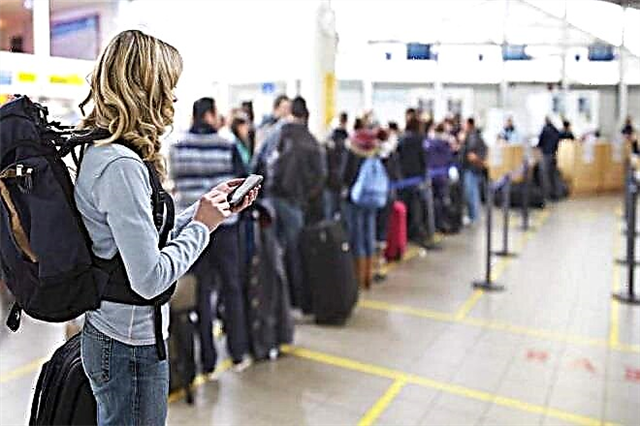For decades, the German government has been making a lot of efforts to build a real social paradise in the country. Today, everyone who is in need will receive the necessary assistance in the FRG. Those who were left without permanent work are no exception. The state takes care of them by paying benefits to the unemployed in Germany, the amount of which in 2021 is quite capable of meeting basic needs. Not only those who have worked, but also those who, for objective reasons, have no work experience, can apply for benefits.

German labor market
For several years now, the Federal Employment Agency (Bundesagentur für Arbeit, BA) has been reporting on the favorable development of the German labor market. The percentage of the employed population continues to grow, and the demand for labor is increasing every month.
According to the IA, as of September 2021, 834 thousand open vacancies were registered in the federal system, which is 61 thousand more than a year earlier. The number of employed is also growing, which exceeds 45 million people.
The incomes of ordinary Germans are also growing. The average salary for full-time employees of German enterprises, according to the Federal Statistics Agency (Statistisches Bundesamt), in 2021 was 3771 euros, which is 68 euros higher than a year earlier.
As before, there are serious regional differences in wages: in some regions it can be up to 25%. The highest income can boast of employees of health care institutions (6.8 thousand euros), bank managers (5.7 thousand euros) and engineers (5-5.7 thousand euros).
Unemployment in Germany and Europe
Against the background of the favorable development of the German labor market, the unemployment rate in the country is also decreasing. For example, in September 2021, according to the VA, the historic minimum since reunification was repeated: the unemployment rate was 5%, and about 2.256 million people were registered as unemployed. A year earlier, the number of unemployed was 192 thousand more.
It is too early to talk about average annual indicators: in the fall, there is a revival in the labor market (in July-August, unemployment was 5.1-5.2%), so the number of unemployed will obviously continue to decline.
However, given the available numbers, the 2021 average for October is 5.3%. Please note that the unemployment rate, calculated according to the ILO methodology, is even lower and amounts to 3.4% or 1.47 million unemployed.
Such tendencies cannot but rejoice German officials. Even with a high influx of foreign migrants, they manage to maintain a high level of employment, reducing the unemployment rate in the country from year to year. Similar trends are observed in other EU countries.
Thus, according to Eurostat estimates (using the ILO methodology), as of August 2021, the EU recorded the lowest unemployment rates in the last 10 years after the financial crisis. They averaged 6.8%, the lowest since November 2008.
Only the Czech Republic (2.5%), Poland (3.4%), Hungary (3.7%) and the Netherlands (3.9%) can fully compare with Germany (3.4%). For example, in Austria the unemployment rate is 4.8%, in Belgium - 6.5%, in Finland - 7.6%, in France - 9.3%, in Italy - 9.7%, in Spain - 15.2%. The anti-leader is Greece, where unemployment rates reach 19.1%.
All this makes Germany one of the most successful countries in the fight against the manifestations of unemployment in the labor market. And there are quite objective reasons for this.
Methods of State Struggle against Unemployment
At the beginning of the 21st century, Germany experienced serious difficulties with unemployment. The average indicators did not fall below 11-11.7%. The situation is much better today. But there was no single and magic solution - the labor market reforms introduced during 1998-2005 helped to improve the situation. They are still valid today.
Let's consider the main measures thanks to which the Germans are successfully fighting unemployment:
- Firstly, the period of how much compensation is paid to the unemployed was reduced - from 32 to 12 months. This eradicated long-term unemployment and made people look for work faster.
- Secondly, the institution of "mini-jobs" (Minijobs) was introduced. This is a kind of part-time employment, part-time work, where people can work for 1-2 months and at the same time are a category for which a preferential tax regime is provided. Today, such jobs employ about 12 million people.
- Third, the decentralization of wage negotiations at the company level was carried out. This has been a key moment in the return to full-time employment for many employees.
- Fourth, IA implements a variety of employment promotion and promotion programs:
- for a limited time, the IA pays employers a kind of “integration grant” subsidy that partially compensates for the labor costs of hired unemployed people who show “lower productivity”;
- BA also subsidizes internships for young specialists at enterprises in their chosen specialty for training;
- grants are also provided for the retraining of staff through the WeGebAU program. Such a program is designed for low-skilled employees and employees of retirement age;
- grants are also issued to finance the remuneration of persons with disabilities (in part or in full for up to three months) and to equip workplaces for them;
- in addition, IA promotes the employment of refugees. The program is aimed at young migrants up to 25 years old who are trained in the employment service, can choose the specialties they are interested in and undergo internships in various German companies.
Despite all this, the German labor market remains tightly regulated by the legislator and the authorities. This allows you to maintain a balance between the interests of business and citizens. One of the most striking manifestations of this is the financial assistance for which the unemployed apply.

Let's figure out what social benefits are received by persons who have been left without work. The main types of German grants are Arbeitslosengeld I (ALG-I) and Arbeitslosengeld II (ALG-II). Let's consider them in more detail and see how they differ.
Arbeitslosengeld I Unemployed Benefit (ALG-I)
ALG-I payments are the main benefit that most of the working population counts on in the event of a loss of employment. In essence, it is not an allowance: rather, it is an insurance payment that a citizen was able to earn during labor activity at the expense of his contributions and employer's contributions.
Paid by ALG-I from an insurance fund administered by the BA. Such an allowance is paid to citizens regardless of whether they have savings and other features of their financial situation.
The regulation of unemployment assistance is carried out in §§ 136-144 part III of the Social Code (SGB III). Let's consider the conditions on which ALG-I is charged.
Terms of accrual of ALG-I
According to § 137 SGB III, a person who meets three main conditions is entitled to unemployment benefit:
- is unemployed;
- registered as unemployed in the VA;
- fulfills the qualification period requirement.
According to § 138 SGB III, any citizen or foreigner with a work permit can be considered unemployed if he has lost his job (or will soon lose), makes an effort to find a job or if his employment is less than 15 hours per week. That is, for Russians who work in Germany, if they fulfill other conditions, the manual is also available.
In this case, the unemployed must be registered with the VA. To do this, he must independently appear at the employment service, submit an application and register.
This must be done as early as possible: 3 months before the planned departure from work or within three days after receiving a notice of dismissal from the employer.If these deadlines are violated or the employee left work of his own free will for no apparent reason, the benefit may be frozen. On the first day of unemployment, you must personally appear at the VA
Another condition is the payment of insurance premiums (Versicherungspflichtige Beschäftigung). Only those employees from whose salary insurance contributions were paid can apply for benefits.
The last main condition is the qualification period of work. According to §§ 142-143 SGB III, in order to receive benefits, the employee had to be officially employed and paid insurance premiums for at least 12 months over the past two years.
Therefore, in order to be eligible for ALG-I, an eligible person must:
- Register with the BA at least 3 months before the planned unemployment or within 3 days after receiving the notice of dismissal. You can do this online.
- On the first day of unemployment, personally report to the nearest office of the labor and employment agency and inform your inspector about yourself. You can find the address and contacts of the nearest VA office here. You must have with you:
- an identification card or passport with a mark on the residence permit;
- social security card;
- written proof of termination of the employment contract;
- summary.
- At the office, the unemployed person will be given an application form for unemployment benefits. Alternatively, it can be submitted online.
ALG-I size
The amount of unemployment benefits depends on three key factors: the average earnings in the last year, the presence of a child, and the tax class to which the unemployed belongs. Thus, according to § 149 SGB III, the base rate is 60% of the average salary.
If an unemployed person has at least one child (or the unemployed's spouse has such a child, provided that they live together) and receives an allowance for it, the basic amount of the allowance rises to 67%. However, this is not the final figure, the tax class is of great importance.
For example, an employee who earns € 2,000 a month, does not have children and is in the 1st tax class (for example, is not married), will receive ALG-I in the amount of € 820 every month.
If he is married (III tax class), the amount of the benefit will be 933 euros. Moreover, if he has a child, in 2021 the amount is already 1,042 euros. For an accurate calculation, use a special calculator from BA.
The period during which the benefit is paid according to § 147 SGB III depends on the age of the employee (affects after reaching the age of 50) and the length of work during which the premiums were paid. It can be from 6 to 24 months. The specific time frame can be calculated using the table below.

In each case, Agentur für Arbeit carries out an individual calculation, therefore, for more specific figures, we recommend contacting the nearest agency office.
Please note that BA has the right to block the payment of benefits if you constantly refuse the vacancies offered by the agency, do not take part in recommended employment activities, cannot prove that you are looking for a new job, or did not inform the agency about the fact of employment.
Part-time job when receiving ALG-I
According to § 155 SGB III, an unemployed person has the right to earn extra money while receiving unemployment benefits, for example, using the Minijobs model. If his income is less than 165 euros, the size of ALG-I will not change. If it is more, Agentur für Arbeit will calculate the labor costs incurred (travel, food, purchase of work materials, etc.), deduct it from income and reduce the benefit by the resulting difference. In this case, the amount of 165 euros will also be deducted from the amount of income as initially non-taxable.
For example, income from a part-time job will be 450 euros, expenses 100 euros, the amount of ALG-I is 1042 euros.
450 - 165 - 100 = 185 euros.
1042 -185 = 857 euros - the amount of ALG-I, which will be paid in the future.
Benefit for the unemployed ALG-II
ALG-II is a classic example of social assistance - an allowance that is paid to cover the minimum needs and subsistence level of unemployed people. Such a living wage, according to § 20 SGB II, must cover the need for food, clothing, hygiene products, provision of living and living conditions, payment of utilities, as well as normal participation in the social and cultural life of society.
Conditions for registration of ALG-II
The right to apply for social benefits for unemployment is received by:
- unemployed people who do not have the required work experience to obtain ALG-I;
- unemployed people who receive ALG-I, but the benefit is less than the amount required to cover the minimum household needs;
- working citizens and foreigners whose labor income is below the subsistence level.
Any of the beneficiaries of such assistance must be between the ages of 15 and 60-67 (before reaching retirement age), live in Germany and be able to work (at least 3 hours a day).
Thus, the right to ALG-II is also possessed by foreigners with a residence permit (the exception is if they are in the Federal Republic of Germany only to look for work), refugees, asylum seekers, homeless people and other vulnerable sectors of society, if they do not belong to any or another benefit category: pensioners, disabled people and other disabled categories receive other benefits.
To apply for ALG-II, the applicant must contact the nearest Jobcenter.
The addresses and contacts in the regions of Germany can be found here. To apply for the benefit, the beneficiary of the assistance submits an application to which he encloses an identity document, a social benefit card, as well as documents that confirm the need for additional financial assistance.
ALG-II size
The aggregate size of ALG-II is determined by several criteria, including the age of the recipient, his marital status, and the presence of special needs. For 2021, the basic amount of the ALG-II unemployment benefit is:
- 416 euros - for single adults, single parents, as well as adults with a minor spouse;
- 374 euros - for persons who are married or in a civil partnership;
- 332 euros - for persons under 25;
- 316 euros - for minors;
- 296 euros - for children under 14;
- 240 euros - for children under 6 years old.
In addition to this money, the person is allocated funds to pay for rent and heating. Their size depends on the region of residence and corresponds to the standards established there.
In addition to these amounts, the beneficiary of the allowance may receive additional assistance from the state, for example, if this is caused by additional costs for medical treatment, the purchase of special baby food, is associated with childbirth or education for children. Use a special calculator to calculate a specific size.
Unlike ALG-I, the calculation of the size of ALG-II takes into account the existence of a person's cash and funds in bank accounts, real estate and expensive movable property, securities and even financial assistance from relatives.
ALG-II can be appointed for an unlimited period; for the first time he is appointed for a period of 12 months. After that, the recipient must re-apply to the employment center - there they will check for the existence of circumstances requiring the appointment of benefits, after which a decision will be made.
Typically, this assistance has to be renewed every 12 months. After appointment, it is paid monthly in advance, that is, for each forthcoming month.
Impact of ancillary income on ALG-II
The recipient of social assistance is also entitled to receive additional income. But they will not affect the size of ALG-II only when their size is less than 100 euros per month. If the additional income is higher, it will reduce the amount of the benefit.
The higher the amount of additional income, the more of this amount will reduce the amount of the benefit. Use the table below to calculate the deduction

For example, if the additional income is 350 euros per month. 350-100 = 250 euros -20% (50 euros) = 200 euros. Thus, the amount of the allowance will be reduced by 200 euros.
Other social assistance for the unemployed
In addition to the above unemployment benefits, unemployed or part-time workers can qualify for a number of other subsidies from the state. The table below will help you to briefly familiarize yourself with them.
| Subsidies | Basis of appointment | Subsidization amount | Term |
|---|---|---|---|
Einstiegsgeld | Assigned to ALG-II beneficiaries wishing to engage in business or re-employment. | 50% of ALG-II | Up to 2 years |
Gründungszuschuss | Assigned to ALG-I recipients wishing to do business | EUR 300 both before and after the end of the ALG-II payment | 15 months |
| Kurzarbeitergeld | Assigned to persons in temporary or part-time employment | Up to 60% of the difference between full and part-time wages | Up to 2 years |
| Bildungsgutschein | Assigned to persons undergoing training, including retraining | In the amount of training costs |
Please note that these benefits, including unemployment benefits, are not assigned to beneficiaries of assistance for refugees, for PP, for the disabled and pensioners, as well as other benefit categories of the population.
Medical insurance for the unemployed
You cannot live in Germany without health insurance. Insurance in the country is implemented by two types of health insurance companies (Krankenkasse) - private and state.
Everyone who earns less than 54.9 thousand euros per year, that is, the majority of the population, are obliged to become clients of state treasuries. The costs of health insurance are huge - 15.5% of the annual gross income, half of which is traditionally covered by the employer. But what if the person has no earned income and is in the status of unemployed?
In this case, the costs of compulsory insurance are covered by the Agency for Labor and Employment, which pays benefits to the unemployed. At the same time, insurance services continue to be provided by the same insurance company as before unemployment.
However, while for ALG-I recipients, BA fully covers the fees, for ALG-II only partially.
Is Unemployment Benefit Sufficient For Living
Many are interested in whether it is possible to live on the money that is paid as unemployment benefits. For obvious reasons, both types of income cannot fully cover the lost earned income.
ALG-I, as its size is taller, is better at this task. Its recipients can fully cover their household needs for food and utility bills, and can even afford some clothing. You won't be able to postpone anything or go on vacation with this money. The limited size and term of payments just stimulate citizens to look for a new job.
It is more difficult for ALG-II recipients because their benefits are lower. But even they can fully cover the cost of food, utilities and even clothing - the amount of the allowance is calculated specifically for these purposes.
Conclusion
All unemployed people in Germany, including foreigners, are entitled to unemployment benefits - for this they must be registered at the local employment center. If they previously had a job and paid premiums, they are eligible for ALG-I unemployment insurance. Its size is usually 60% of labor income.
When the amount received is less than the subsistence level or the unemployed person has not had a job before, he is entitled to ALG-II unemployment benefits. Its size is much smaller and only covers the basic life needs of the recipient.











